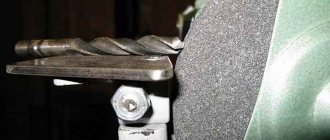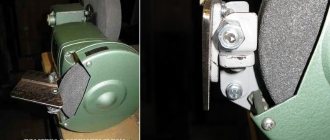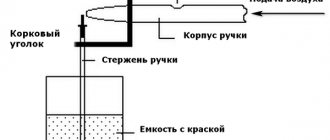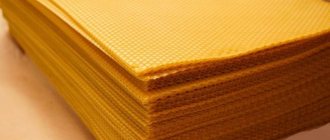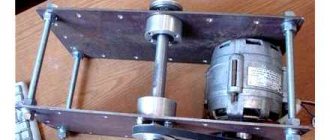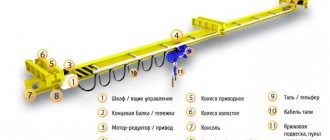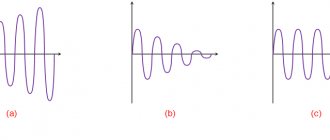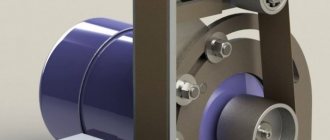Unlike other methods, shaving with a straight razor completely removes every hair and leaves your face smooth and fresh. However, before you start shaving, you must know how to sharpen a razor; not knowing how can lead to quite unpleasant results.
Since there is no need to change the blades, it is important to keep the blade sharp so that the razor is always ready to use at any time. This will save you from a number of problems that can arise from using a dull razor. In the following paragraphs, we'll look at everything you need to keep your razor sharp.
Honing stone
A honing stone is simply a whetstone along which you sharpen your razor blade. A fine grit stone is a very effective tool for keeping your razor sharp and is also the best tool for polishing. In addition, it is advisable that you purchase a large stone so that the blade fits completely, otherwise you will have to ensure a uniform sharpening angle.
The hone is a must-have tool for any straight razor owner simply because without it your blade will become useless due to dullness. After all, using a dull razor can lead to irritation, cuts, etc.
Take it for sharpening or sharpen it yourself: all the pros and cons
Only an experienced specialist knows for sure how to sharpen a straight razor and how to do it correctly so that the blades are sharp and retain their original appearance. If a man does not have the skills to work with sharpening devices, it is better to seek help from a specialist. Most often, this solution is resorted to when adjusting the belt does not produce results.
Advice! Today, modern specialists in sharpening and straightening straight razors carry out various hardware procedures. The most effective and safest way is to sharpen a razor with a laser sharpening.
Not every man knows how to sharpen and straighten a straight razor blade with a stone. Therefore, if you lack the skills and knowledge of how to restore the former appearance and sharpness of the blade with a stone, it is better to contact a specialist. With your own efforts, it is much easier to adjust the sharpness of the razor with a belt, as well as with other materials, such as sandpaper. Such work is less risky in terms of the degree of injury to the razor.
Belt
You will need a belt after you have sharpened the razor on the hon. The main function of the belt is to polish the edge of the blade and remove any small imperfections that may cause cuts. Usually a special leather belt or slings made of other materials are used.
Typically, the choice of sharpening or straightening depends on how dull your razor has become. If you're in a hurry but need to shave, trimming will take less time and you'll also have a sharp enough blade to get a good shave. However, if your blade has become truly dull, then sharpening is necessary. You can then continue to sharpen the blade to maintain its sharpness over time.
Dangerous design
“Opaska” is also considered a tool that technologically consists of parts. These parts must be used correctly. Like any tool or product, it has a design and technological map. Before you sharpen a straight razor, you need to study its design.
In its structure it has many details:
- double base;
- blade;
- head;
- back;
- brand;
- tail;
- heel;
- lever.
The “guard” consists of two main parts – a handle and a metal blade (blade). Technologically, as a safety feature, a hole was designed in the handle into which the blade “hides” so as not to injure anyone. The dangerous blade itself rotates freely along its axis during operation, but is strictly fixed between the handle mounts. The handle has ridges and gaps (erlem) that provide a rigid grip between the hand and the tool. The main thing is to sharpen a straight razor correctly.
The blade angle is 12 degrees for maximum grip on the cutting material. The device works as cleanly as possible, unlike modern machines and electric shavers. But not everyone can use it; it requires a lot of skills and training.
How to sharpen a razor
There are a number of methods for sharpening a razor. However, the method used usually depends on how dull the blade is. Basic honing (sharpening) only requires you to use honing paste along with a sling, while advanced honing requires the use of honing stones.
Surely we would all like to buy a whole set of honing stones, but for everyday shaving we only need 1000 - 5000 and # 8000 - 12000 grits. The #1000 Grinding Stone's main function is precision finishing, while the #8000 mainly does edge polishing as well as finishing touches. To sharpen your blade, you need:
Features and main differences between a trimmer and a hair clipper
27 January 2019
Haircutting devices: what is the difference between a trimmer and a hair clipper. Brief description of the devices, their main differences, as well as the advantages of the trimmer...
Read more
Use the "X" pattern
After positioning the razor on the stone, make sure that each stroke is made evenly along the stone. Pull the razor towards you at a slight angle to ensure that the entire length of the blade travels completely across the stone.
Also, make sure that you keep the razor blade level on the stone, while avoiding additional pressure - the chips of the stone and the weight of the razor will do all the work itself.
At the end of each stroke, turn the razor over, making sure that the blade does not catch the stone, as this can dull the newly formed corner. Using the "X-pattern" will guide your hands easily.
Sharpening a razor at home: what is important to know
Many men believe that sharpening blades for a machine is an unlikely or completely useless task. Especially considering the fact that there is a huge assortment of new blades and cassettes on sale in stores. In fact, high-quality razors cost a lot of money, as do blades for such models. Therefore, experts recommend saving money and sharpening blades, unless, of course, you use a cheap disposable razor.
Only a few types of razors can be sharpened using this method:
- disposable machine;
- reusable razors with cassettes;
- T-shaped machines.
If, in addition to proper use and care, the blades are sharpened, a man will be able to provide himself with high-quality wet shaving and save money on the purchase of a machine or blades. Otherwise, the blades will not only cut hairs poorly and pull them out, but also scrape off the top layer of skin. An important condition for sharpening is to follow the instructions for all stages, otherwise you can dull the cutting surface even more.
Slow and easy movements only
To sharpen the entire length of the razor and minimize the amount of work you have to do, slow and light strokes are your safest strategy.
Using light strokes slowly will ensure that the razor remains in contact with the stone until the end of the stroke. This will sharpen the entire length of the razor all the way to the edge.
When you put pressure on the razor, you increase your chances of cutting off the desired sharpening angle. To get very sharp and smooth edges, you need to take your time sharpening.
Why is razor care so important?
As mentioned earlier, a straight razor is a vulnerable and sensitive device that can suffer from any mechanical impact. The razor therefore requires special care and careful use so that the blades remain sharp and functional for as long as possible. A good straight razor will serve a man for decades, during which time the razor will need to be lubricated, sharpened and trimmed.
Experts note that the metal of a straight razor needs rest. Therefore, it is not recommended to use the razor daily. Metal should be stored in a place with a low percentage of humidity; the bathroom is absolutely not suitable for this. Humid air and frequent contact with water lead to metal oxidation and rust. It is not recommended to drop the razor, as this compromises the integrity of the blade.
How to finish a straight razor
Finishing the razor is necessary to align the razor blade. This is something you should do before every shave to ensure a pleasant shaving experience. Every time you fine-tune your blade before use, you'll be sure to get the best shaving result.
The sling consists of two components - leather and fabric. The fabric side has the job of removing anything that could cause damage to the skin, such as metal fragments, soap, etc. While the leather, which usually has a smoother surface, does most of the work on the surface of the razor.
Since you should do this before every shave, stropping skill is essential, just follow these steps:
Attach the end of the sling (belt) and hold tightly.
To make the finishing process easier and reduce the chance of cutting, you must adopt the correct posture. Typically, you angle the line so that it points downward at you at an angle of about 45 degrees. This is very important, especially if you are just learning.
It is important to make sure that the belt is fastened tightly and does not fidget while finishing the blade. For example, an excellent mounting location would be a heated towel rail or door handles.
Run the razor along the line in the direction opposite to you.
The base of the razor should be pointing in the opposite direction from you and the blade should be pointing towards you. Additionally, you should keep the blade slightly raised so that the edge contacts the strop at a slight angle.
After this, run the razor over the skin, applying very light pressure. Press down on the razor until the blade is completely against the skin.
Turn the razor over at the end of the sling (belt).
Once you reach the end of the sling, rotate the razor so that the base is now facing your direction. Make sure the blade remains in contact with the strop as you rotate the razor during the inversion process. Maintaining contact between the line and the blade can be quite a difficult maneuver, but with practice you will get used to it. This makes your follow-up much more efficient and effective.
Pull the razor towards you.
Place the razor blade completely against the skin. When doing this, make sure that you do not apply more pressure than when moving the blade up the sling. Maintain that slight angle mentioned earlier with the strop so that the edge and skin remain in contact all the way. When you reach the end, turn the razor over and return it along the skin.
Repeat this process 10-15 more times.
Use the X pattern on narrow belts.
Just like sharpening, the X-pattern also applies to slinging (finishing). If your belt is not wide enough to cover the entire length of the razor blade, this method will help you out. Move the blade away from you, moving it slightly to the right, move it to the opposite end of the blade and return it back, moving it in the opposite direction, to make an “X”.
How to use correctly at home?
First, the skin is prepared:
- For a smooth shave, the face is washed and steamed.
- Use a terry cloth soaked in warm water and apply it to your face for 2-3 minutes.
- Many men prefer to use soap during the procedure, but it can dry out the skin, so purchase special foam.
Movements with the blade are carried out in the direction of hair growth. To make the shaved area smooth, you need to run the blade over it several times.
Start on the right side of your face, using your left fingers to stretch the skin. Then go to the left side. You need to stretch the skin so as not to miss a single area.
When operating with a blade, you should tilt your head for convenience; when cleaning the chin and neck, tilt your head back. All actions are performed carefully and slowly, this is the only way the skin will not be injured.
After shaving is completed, a damp, warm towel is applied to the face and balm is applied to the skin. This way you can prevent the spread of irritation and redness on your face.
How to shave with a straight razor is shown in the video:
How to hold a beginner?
It is also important to master the shaving technology itself and how to operate the machine correctly. At the same time, experts recommend knowing three ways to hold a razor in your hands:
At the same time, experts recommend knowing three ways to hold a razor in your hands:
- Depending on the direction of the blade, that is, the tip should point either up or down.
- Depending on the angle of rotation, that is, the razor is located relative to the wrist.
- The little finger should be on the tail of the machine.
Hold the tool by the handle with three fingers - thumb, index and middle, the little finger is in place of the neck and fixes the direction of the razor. The most important thing is to hold the razor firmly in your hands, but without much tension.
The sharper, the less stubble
Many people wonder how a sharp blade can affect hair growth, because in any case, it will appear again. In fact, if you don't want thick stubble, then always choose a sharp razor.
The advantage of a blade razor over other tools is that a well-sharpened blade makes shaving easier, which means the result will be better. But a dull blade will tear facial hair and lead to irritation.
Hair angle
The razor blade should move with the toe forward, and the angle of inclination should be within 30 degrees; you should not bring it to 40 degrees.
- All movements are carried out with ease and ease.
- The movement is carried out only by the brush, which does everything rhythmically, but at the same time softly.
If you use your entire hand during shaving, the hair will not be shaved, but pulled out. As a result, the skin will become irritated.
How to properly tighten the skin?
This should be done to better remove stubble. After this, the skin will become smooth, like a baby's.
How to do it correctly:
- The tension is done with either the middle or index finger, and the skin is stretched in the opposite direction of the movement of the blade.
- The indentation is made by 2-3 cm. In this case, the fingers should be on an area not lubricated with foam.
- To do this, the soap formation is pushed back with the back of the razor.
Tilt and direction
The angle of inclination, as already mentioned, is 30 degrees. This is necessary so that the skin becomes as smooth as possible and no areas of irritation appear.
If you make the angle sharper, you won't be able to shave like that, since the blade will slide over the surface of the skin. If you increase the angle distance more than 40 degrees, there is a risk of cutting.
To razor sharp
Sharpening is carried out simultaneously over the entire plane, so you need a stone of the appropriate width, or you need to drive the tool crosswise diagonally if the abrasive is narrow.
When working on medium-grained stone, we move the blade with the cutting side forward, as well as on subsequent fine grains. The coarser the abrasive, the less pressure on the blade is required.
It should be borne in mind that a straight razor does not like sudden transitions from coarse to fine grain, so we adhere to the rules for changing stones. The grit of the next abrasive should not exceed twice the previous one. Grit is the size of a stone's grain. A high grit value means a fine grit, and vice versa. To fully sharpen the razor, abrasives from 600 to 12,000 grit are used. The starting number depends on the degree of wear of the razor and storage conditions.
It is necessary to wash the blade before each stone change. Getting large particles on a fine abrasive can ruin the whole job. The last stage is finishing using the finest-grained stones. In this case, the pressure on the blade should be kept to a minimum. The blade glides, barely touching the abrasive, almost only under its own weight.
You can check the result by taking a razor in one hand, a hair in the other and lightly lowering it onto the cutting edge. If the hair splits neatly into two halves, it means everything was done correctly.
Care and storage
A straight razor (proper sharpening of which is very important) must be stored properly. Storing the tool is quite important, since it can deteriorate much faster than possible. Therefore, after the question: how can you sharpen a straight razor, you need to think about its proper storage.
If you do not use a straight razor often, then after shaving you should thoroughly rinse the blade, dry it and pack it away. Storage takes place in a well-ventilated place, in packaging. Under no circumstances should a dangerous blade be left lying around; this is a strict violation of its storage.
If the blade is constantly in use, then it is advisable to have one or two more tools in reserve. This will allow the tool to last much longer in use.
The metal in the storage location should “rest” after work. A blade that is not planned to be taken out for a long time can be lubricated with paraffin. Then the question of how to sharpen a straight razor will not arise for a long time.
Demonstration - cutting a razor after sharpening. Cuts the hair lengthwise!
When identifying irregularities, we first use a coarse-grained stone. When starting sharpening, you must remember that the blade is extremely sensitive and sudden movements can lead to additional defects. Practice requires patience and time. Returning the razor's sharpness:
- Wet the stone with water.
- We hold the tool on both sides and press the comb and cutting edge at the same time. There is no need to press hard, the main thing is close contact of the entire surface of the blade with the abrasive.
- The razor should be passed along the bar with the back side facing forward, ensuring equal pressure. In the correct position, the thick butt flat allows the formation of the correct angle of inclination.
- The burrs that are inevitable during rough processing are removed by running the cutting edge forward along the stone 20-30 times.
